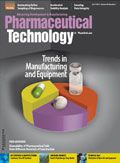Benefits and Risks of Drug Information on Social Media
FDA draft guidances seek to maintain accurate drug information for patients in new media.
Social media has changed the way people and organizations communicate. Platforms like Twitter and Facebook have demonstrated that they can be effective tools for widespread communication of emergency instructions during natural disasters and in organizing political change in countries with censored media. Social media outlets, however, have limitations when asked to deliver complex, technical information. In addition, the open platform nature of the Internet presents challenges for companies trying to maintain correct information about their products online.
Noting that patients and healthcare providers regularly get information about medical products through social media outlets, FDA in June proposed two draft guidances that share the agency’s current thinking about how drug and medical device manufacturers can accurately communicate about their products online.
So many words, so few charactersGuidance for Industry, Internet/Social Media Platforms with Character Space Limitations--Presenting Risk and Benefit Information for Prescription Drugs and Medical Devices (1) provides recommendations for conveying information about a drug on social media platforms such as Twitter or paid search results links. While the 140-character limit of Twitter may be enough for the latest life updates from figures in popular culture, it will be difficult for drug companies to use the platform under FDA’s proposed guidelines.
In the guidance, FDA notes: “… regardless of the platform, truthful, accurate, non-misleading, and balanced product promotion best serves the public health. For some products, particularly those with complex indications or extensive serious risks, character space limitations imposed by platform providers may not enable meaningful presentations of both benefit and risk … If an accurate and balanced presentation of both risks and benefits of a specific product is not possible within the constraints of the platform, then the firm should reconsider using that platform for the intended promotional message.”
In the draft guidance, FDA indicates that a drug’s risk information, including the most serious risk associated with the drug, must be presented with benefit information in the same limited-character message, such as a tweet. A mechanism, such as a hyperlink, must direct people to more information about risks. That is a lot of information to get into 140 characters.
Correcting misstatements
In Guidance for Industry, Internet/Social Media Platforms: Correcting Independent Third-Party Misinformation About Prescription Drugs and Medical Devices (2), FDA explains that drug companies generally are not responsible for comments from third parties who are independent of the drug company that are posted on the company’s website forum, an independent website, or in social media. The document notes approaches to correcting misinformation and posting corrective information.
If a firm voluntarily and truthfully undertakes the correction of misinformation that is within the scope of the guidance, “FDA does not intend to object if these voluntary corrections do not satisfy otherwise applicable regulatory requirements, if any,” the draft guidance reads.
In a blog post (3), Thomas Abrams, director of FDA’s Office of Prescription Drug Promotion for the Center for Drug Evaluation and Research, noted that the agency sees social media as an important resource and is committed to developing additional guidance for drug manufacturers, with the best interests of the patient in mind.
However, the task of maintaining proper information about regulated products in an unregulated environment may be too great a challenge for FDA or drug companies to manage.
References
1. FDA, Guidance for Industry, Internet/Social Media Platforms with Character Space Limitations--Presenting Risk and Benefit Information for Prescription Drugs and Medical Devices, Draft Guidance (Rockville, MD, June 2014).
2. FDA, Guidance for Industry, Internet/Social Media Platforms: Correcting Independent Third-Party Misinformation About Prescription Drugs and Medical Devices, Draft Guidance (Rockville, MD, June 2014).
3. FDA, FDA Issues Draft Guidances for Industry on Social Media and Internet Communications About Medical Products: Designed with Patients in Mind, (Accessed June 17, 2014)

About the Author
Rita Peters is the editorial director of Pharmaceutical Technology.

Pharmaceutical Tariffs Are Imminent: How Industry is Bracing for Impact
April 16th 2025On April 14, 2025, the Trump Administration launched a national security-driven investigation into pharmaceuticals, a move that will likely result in tariffs being placed on pharmaceutical drugs, ingredients, and other components that are imported from outside of the United States.
Pharmaceutical Tariffs Are Imminent: How Industry is Bracing for Impact
April 16th 2025On April 14, 2025, the Trump Administration launched a national security-driven investigation into pharmaceuticals, a move that will likely result in tariffs being placed on pharmaceutical drugs, ingredients, and other components that are imported from outside of the United States.
2 Commerce Drive
Cranbury, NJ 08512
All rights reserved.